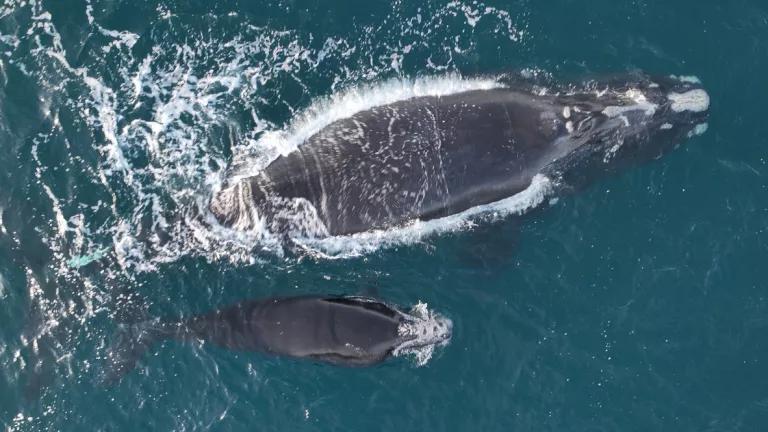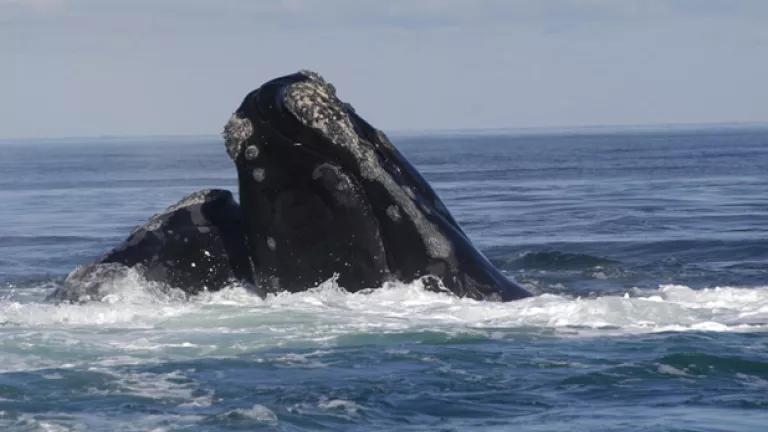NRDC Sues Trump Administration, Again, to Protect the Gulf of Mexico Whale
After two successful lawsuits, the whale is federally recognized as being at risk of extinction—but the administration has failed to designate critical habitat for the species.

After two successful lawsuits, the whale is federally recognized as being at risk of extinction—but the administration has failed to designate critical habitat for the species.
For the third time, NRDC and our partner Healthy Gulf have sued to force the government to follow the law and protect the Gulf of Mexico whale, one of the most endangered marine mammals on earth. You can read a copy of our lawsuit here.
Only an estimated 33 Gulf of Mexico whales remain in the wild, and the population faces a host of threats from human activity, including noise and pollution related to oil and gas development. For five years, NRDC urged the National Marine Fisheries Service to put the whale on the endangered species list. After two successful NRDC lawsuits, the whale is federally recognized as being at risk of extinction. Unfortunately, the Trump administration has now missed another deadline for protecting this species, this time failing to designate the Gulf of Mexico whale’s critical habitat.
What is critical habitat, and why does it matter? The Endangered Species Act defines “critical habitat” to mean areas where a species lives that contain “physical or biological features that are essential to the conservation of the species,” as well as areas outside the species’ current range that are essential to its conservation. In other words, these are the places we must protect—and the federal government is obligated to protect—to ensure that an endangered species survives. There is bipartisan support for designating critical habitat for the Gulf of Mexico whale: Earlier this month, Representatives Kathy Castor and Vern Buchanan of Florida asked the Fisheries Service to fulfill its obligations under the Endangered Species Act, describing how a designation would “provide additional legal protections, reduce the level of threats from industrial activity, and increase the odds that the species will survive and recover.”
As explained in our submission to the Fisheries Service this spring, the best available data on the Gulf of Mexico whale’s population support a critical habitat designation for 100-meter- to 500-meter-deep waters in the Gulf of Mexico, where the whale has adapted to local prey and conditions. As we explained, that area is “the absolute minimum necessary for the whale’s recovery,” though we hope that someday a growing population will inhabit a wider area and deeper waters.

Map of NRDC’s proposed critical habitat for the Gulf of Mexico whale, between the 100-meter and 500-meter isobaths, showing modern and historical sightings and a habitat density model
The Trump administration was required to designate critical habitat for the Gulf of Mexico whale within one year of its decision in April 2019 to list the species as endangered. It missed that deadline and, instead, the administration is pushing ahead with plans for expanding oil and gas drilling in the Gulf. In March, the Fisheries Service published a Biological Opinion admitting that the future oil and gas activities are “likely to jeopardize the continued existence” of the Gulf of Mexico whale. Yet the same agency, as part of the Trump administration’s cavalier “America-First Offshore Energy Strategy,” is preparing to authorize seismic blasting in the Gulf based on a proposal that would result in a dangerously high number of incidents of harm to Gulf of Mexico whales, sperm whales, and other marine mammals.
The Gulf of Mexico whale is critically endangered, and the government’s delay in protecting its habitat threatens its existence as a species. That’s why NRDC and Healthy Gulf are suing today to make sure the Trump administration follows the law and designates critical habitat that will allow the whale’s population to recover.



